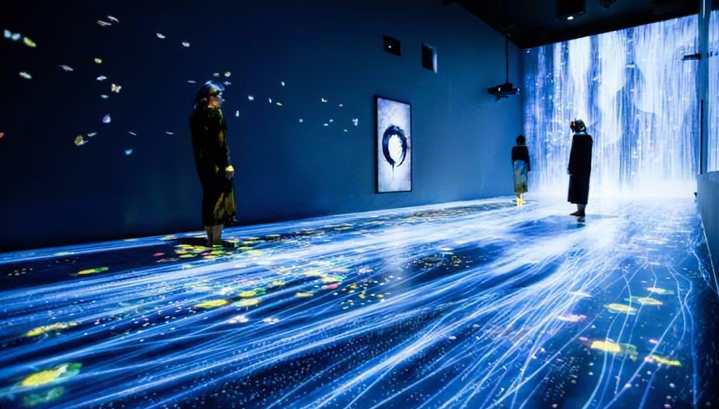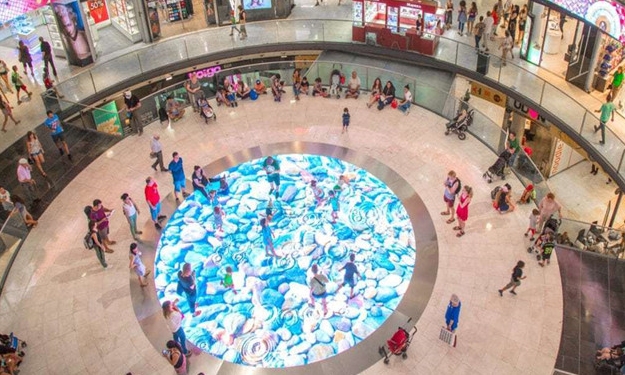An interactive LED floor is a LED floor system including several LED panels with integrated interactive performance to provide more immersive experiences for users standing on it. Creating an interactive LED floor involves several steps and considerations. Here’s a general guide to help you understand the process.

Interactive LED floor increases mysterious atmosphere in stage performance.
Define your project goals and requirements. Consider factors such as the desired size of the interactive LED floor, the level of interactivity you want to achieve, the type of content you plan to display, and the environment in which it will be installed.
Select LED panels suitable for your interactive floor. Look for panels that are thin, lightweight, durable, and designed for floor installations. Ensure they have high brightness and good color reproduction. Consider the pixel pitch, as smaller pitches provide higher resolution and better image quality.
Determine the layout and arrangement of the LED panels. Consider the available space, the shape of the floor area, and any specific design requirements. Create a floor plan or blueprint to guide the installation process.
Follow the manufacturer’s instructions to install the LED panels. Ensure proper alignment and secure mounting to create a seamless and even floor surface. Connect the panels together according to the provided guidelines, ensuring a reliable electrical connection.
Determine the type of interactivity you want to achieve and choose the appropriate sensors. Common options include touch sensors or motion sensors. Install the sensors beneath or around the LED panels, ensuring they can accurately detect user interactions.

Interactive LED floor can be applied at interactive games.
Connect the LED panels and interactive sensors to a control system. The control system should be capable of driving the LED panels and processing input from the sensors. It may involve a combination of hardware and software components to manage the display and interactivity.
Create or customize interactive content for the LED floor. This can include graphics, animations, videos, games, or interactive applications. Consider the capabilities of the control system and sensors when designing the content.
Thoroughly test the interactive LED floor to ensure proper functionality and responsiveness. Calibrate the sensors and fine-tune the control system as needed to achieve optimal performance.
Regularly maintain and monitor the interactive LED floor to ensure its proper functioning. Update the content periodically to keep it fresh and engaging for users.

Interactive LED floor attracts visitors at shopping mall.
Note that creating an interactive LED floor requires technical expertise in LED technology, electronics, and programming. It is advisable to consult with professionals or experts in the field to ensure a successful and safe installation.